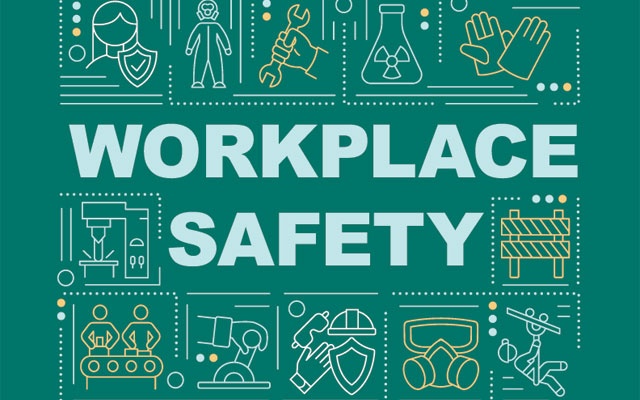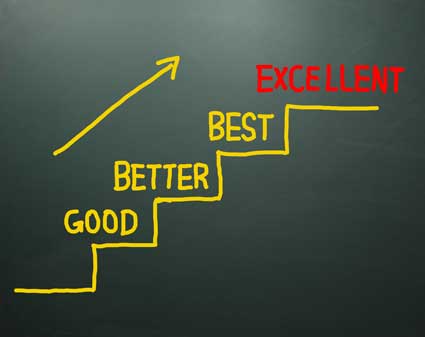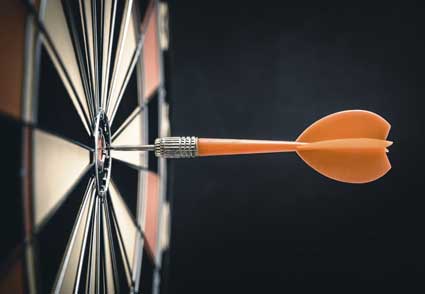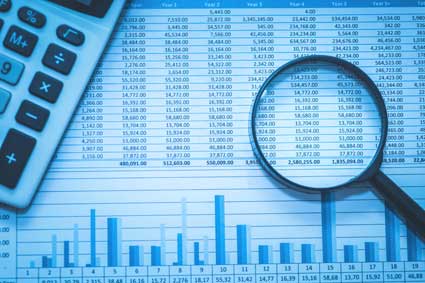The topic of technology has been discussed repeatedly throughout this course as a common inclusion in procurement management. It's presence in the procurement process, in different areas of management and organization, and in the economy as a whole has grown over the years. This has allowed it to be deeply integrated in procurement and warrants a closer look at the roles it currently plays and the potential it has for the future.
This article will look at the usage of technology in procurement management and why it is necessary. Topics will include the areas it is commonly used, the options and trends in those areas, and what to consider before implementing new technology into your procurement management practices.
The inclusion of technology in procurement was originally meant to ease some of the more difficult aspects of the process. Reduce common problems, track data, and generally make it easier for procurement teams to make their purchases and track their progress. Technology had already appeared in other analytical sectors of the business world as a staple of operations in those areas, and was increasing its presence in other parts of society. Its inclusion seemed logical and necessary to keep up with the times. Introducing technology into new areas has always been justified as such, regardless of the circumstances.
For procurement management, the usage of technology has only grown and become more commonplace. The industry is changing and technology has allowed for procurement to quietly keep up with the rest of the business world and society in its success. It's used in managing the multitudes of data that teams need to use in negotiating and decision making. They track their inventories, orders, strategies, contracts, and finances with software and digital systems. Even smaller procurement teams who do not necessarily have an overwhelming amount of data to navigate through as their larger counterparts will have all of their business practices tied to the usage of technology. It is safe to say that tech in procurement is everywhere and it plays whatever role you want it to play.
Why Use Technology?
It is possible for procurement teams to get away with not using a lot of technology and to keep much of their work old-school. The amount that they do use is based upon what is needed to interact with suppliers and other groups relevant to their procurement practices. This is sometimes a matter of budget rather than chosen principles, but there are cases of low-tech usage in procurement. However, that does not mean that there isn't any need or value in implementing technology. Most businesses and procurement teams choose to increase the amount of technology used in their practices because of what it can do in certain areas. The most common reasons given include:
-
Organizational Purposes--Since there is often high amounts of data found in procurement, it can be especially difficult to keep everything organized. Things slip through the cracks simply because there is just so much that needs to be tracked, and mistakes end up being made. It can be very easy for things to get messy very quickly if you're not being vigilant. The inclusion of technology and the usage of inventory systems and the Cloud has made organization much simpler. There's less time and space being used on managing the data crucial to procurement--what can normally fill a room when kept on paper hardcopies can now be found on a single computer. It's easier to stay up to date and decision making using that data is considerably faster.
-
Streamlines The Process--Most agree that technology streamlines the procurement process by moving things along faster and with more accuracy. Steps that used to take weeks to do now only take a few days, maybe even a few hours, to do before moving on to the next step. There isn't a decrease in the outcomes' quality either, as technology is being used to prevent anything from being skipped or shorted as you move down the supply chain. If something is forgotten, the technology being used makes it possible to go back a step or two rather than restarting the entire process all over again.
-
Reduces Issues--If technology is allowing for a more in-depth look at the actions being taken and the data being used in procurement, it's allowing for errors to be caught before becoming a problem. There's software that registers when an error has been made and notifies you of it in real time. You're noticing things faster, sometimes as they happen, and you're able to trace the effects actions have as they move throughout the procurement process. It's not just what is closest to the cause, but all that is connected to it throughout the line. If you find the effects before you find the cause of the problem, you can trace it back to its origins with the use of tech.
Interested in learning more? Why not take an online Procurement Management course?
-
Relevance In Industry, Economy--Your mother probably told you once that you don't have to do something just because everyone else is doing it. And that's very true in most cases, but when it comes to business practices you want to make sure that you are at least keeping pace with everyone else. Technology's presence throughout the business world and its relevance in industries and the economy means that you might just have to do what everyone else is doing if you want to survive. There's a difference between jumping on the bandwagon and doing something necessary to keep your place in society. The innovation that comes with technology has prompted widespread change in business and procurement. If you can't keep up with that change, then you're going to struggle to keep yourself afloat.
How is Tech Commonly Used?
If you're going to use technology in procurement, then it's going to be done with a specific purpose in mind. It's excessive, not to mention expensive, to try and fit every possible program, equipment, or software into every aspect of your operation. You want to have a bit of moderation and not inch yourself closer to replacing everything with a robot. The common areas in which technology is used, and is used for the best impact, include:
-
Storage and Organization--There's a lot of software out there that is specifically designed for digital storage and organization, in any field or area. In procurement, these programs help with managing inventory and information relevant to the procurement process. Most at least use things like the cloud for data storage and organization. The cloud is a network of servers that all have a relevant function to the user, but a rather significant portion of it is used for digitally storing data and information. Access to that data can be given to specific people--e.g. the procurement staff--and can be accessed anywhere using the correct software.
-
Analytics--Speaking of data, technology is also often used for analyzing data in addition to storing it. Tracking progress, strategy usage, spending habits, inventory depletion, and basically any information that can be used to influence decision making in procurement can be done with the assistance of technology. Programs that can be standalone or a part of a larger system analyze data that has been entered in and presents it in a way for it to be interpreted and applied by staff. These programs are largely error-free when used correctly and can improve the procurement team's usage of time.
-
Information Technology (IT)--IT is usually what comes to mind when people need help with their computers at work, but it acts as more than just a help service. When applied to procurement, IT can be used to acquire and maintain technological goods and services relevant to the procurement team's activities. This includes any kind of digital system, software, or programming used for anything else on this list. IT procurement staff members basically make sure that the tech being used is operating as it is supposed to within the workings of the procurement system, meeting the need(s) it's intended to fill, and is actually having some benefit for the procurement team. It's a strategic role that makes sure that technological options are being utilized to their fullest extent and that there is an understand of their purpose in the business.
-
Inventory Management--Most of how technology is applied to inventory management is through monitoring and organization. Tech like Radio Frequency Identification (RFID), which is used in a variety of capacities, helps with inventory control and monitoring of product levels by reporting real time accurate data straight from the shelves. Every item that is added to the inventory is tagged with its unique identifying code that the RFID system automatically tracks so long as it is in the system. A product's entire life in the inventory system is monitored by a few lines of code, and it can help reduce instances of waste and surplus using data collected on the item. An RFID system also notes when a theft has occurred, as tagged items are usually marked as being in specific areas until otherwise noted; remove something that you're not supposed to and the system will flag it.
-
Finances--In your personal life, you probably have used some kind of technology to track your finances. This includes things like budgeting programs and online banking. In procurement, technology can do the same things but on a larger and more intricate scale. Rather than just a few financial elements being tracked with software, it's everything: purchases, transactions, invoices, budget planning and adherence, etc. all can be done with software. Information can be entered in manually by staff or it can be automated, or a combination of the two. The software tracks the data and keeps it organized for you, eliminating some of the more complicated elements of financial management that procurement teams need to do.
How To Choose The Right Tech
Just as you want to make sure that you are implementing technology in the right areas of procurement management, you want to make sure that it's the right technology to use. The variety that is out there means that there are some options that are going to be better than others. You need to evaluate your options before making a decision, and you need to consider certain factors in the process. The key areas that you should take into account when choosing your tech include:
-
Consider Needs--What purpose are you trying to fulfill with the inclusion of technology? Think about what you're hoping to achieve with it and where it is needed to have the desired effect. If you want to improve your data analysis and organization abilities with software, then the options that you look at need to be relevant to data analysis and organization.
-
Consider Cost--Some of the tech used in procurement is very expensive, largely in part of the workload that it needs to be able to handle and the scope of operations. The initial costs of purchasing a program or a system is going to vary depending on what it does, but there is the total cost to consider as well. A large system is going to need to be properly integrated and installed, which could come with extra fees for service and equipment. It is possible that regular business operations need to be put on hold for such large scale changes to be completed, which can cut into your bottom line and ultimately impact your budget.
-
Additional Training--While there may be a personal counterpart to the tech being used in procurement, it's likely that it will be a new thing to staff members. This means that training and education on how to use the tech is required, especially if it's a complicated or extensive system like RFID. Any additional training could come with its own costs and will likely require a certain amount of time in order to get everyone familiar with the program. The more elements there are to new tech, the more there is to learn. Keep in mind that there may be a bit of a learning curve where staff adjust to the changes and that can temporarily impact productivity and workflow.
-
Maintenance Requirements--All of the technology that you can implement into procurement does require some degree of upkeep. Software needs to be updated after a certain amount of time, equipment needs to be repaired or replaced, and the general wear-and-tear that a system goes through can cause it to lose efficiency. As a result, there may be a need for technical support and maintenance to keep things operational and to address any problems that arise. Part of that can be handled by IT staff, but some sellers and suppliers of these systems will offer technical support as a part of the original purchase or as a supplementary service.


























